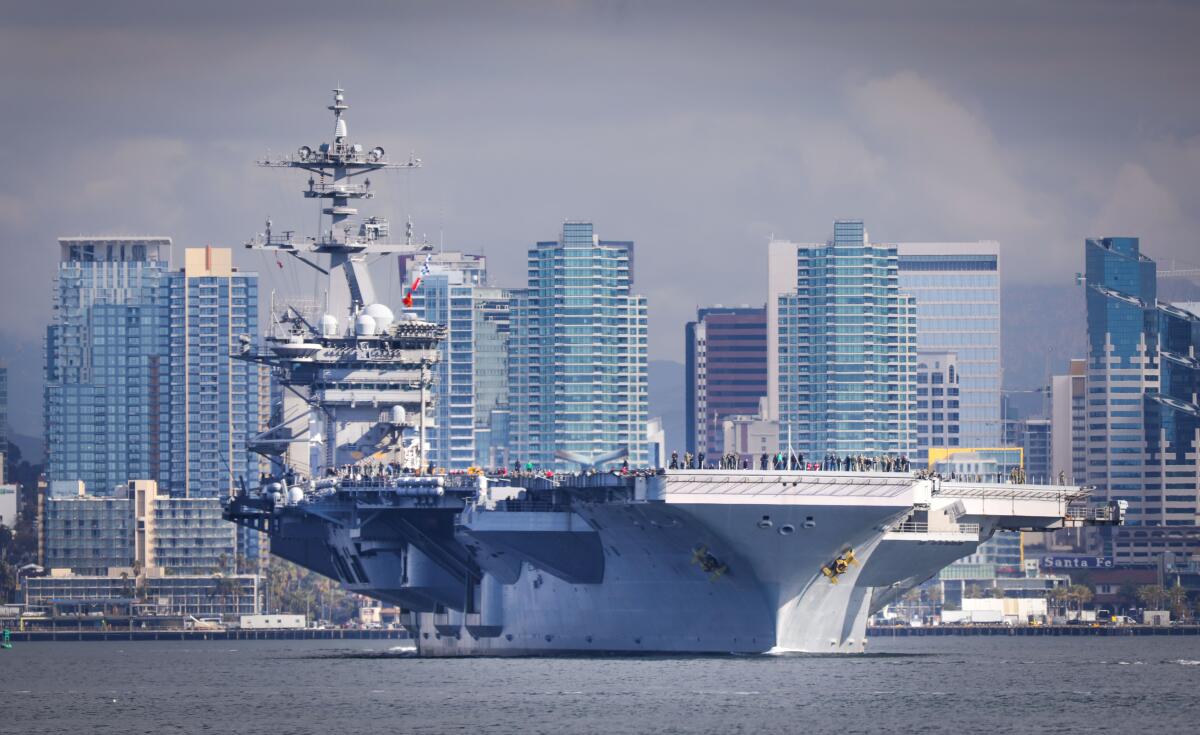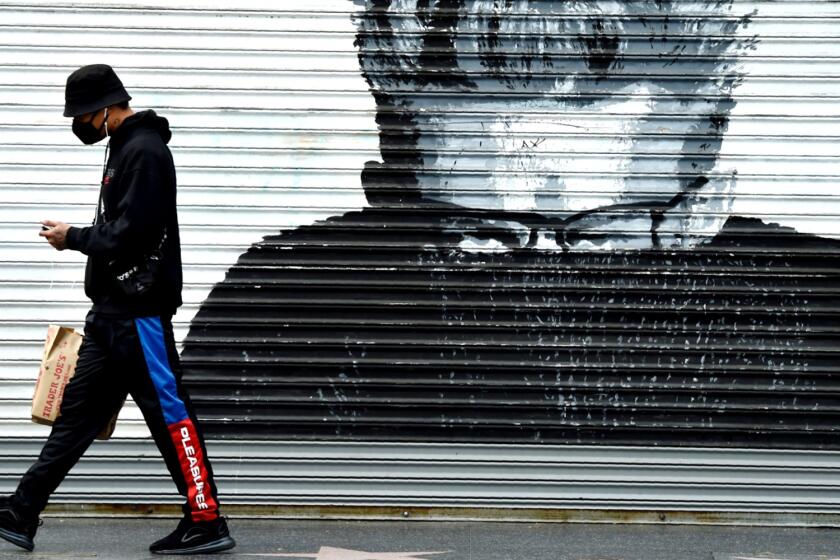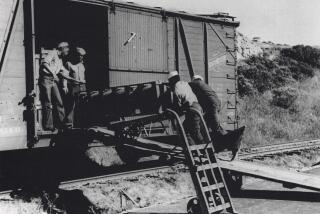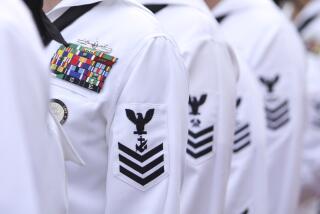Navy to move almost 3,000 sailors off coronavirus-stricken carrier Theodore Roosevelt

Acting Navy secretary rejects captain’s claim in letter that the service isn’t taking care of its sailors.
SAN DIEGO — Nearly 1,000 sailors have moved off the aircraft carrier Theodore Roosevelt and almost 2,000 more will be off by Friday as the ship battles a COVID-19 outbreak in Guam, Navy leaders said Wednesday.
Thomas Modly, acting Navy secretary, and Adm. Mike Gilday, chief of naval operations, announced the partial evacuation of the San Diego-based ship at a Pentagon news conference.
The move comes after ship’s captain, Brett Crozier, wrote a four-page letter decrying the Navy’s response to the COVID-19 outbreak on the ship and its emphasis on testing, saying those measures have not slowed the spread of the virus.
Modly disputed a statement Crozier made in his letter, saying his claim that the Navy was “breaking faith” with its sailors is untrue.
The United States hit a grim milestone Wednesday as confirmed coronavirus cases topped 200,000, adding intense pressure to overstretched hospitals still struggling to find necessary medical supplies.
“It’s disappointing to have him say that,” Modly said.
“I know that that’s not the truth. We’ve been working very, very hard with the ship, with the command structure, to make sure” that the Navy is not breaking that trust. “We need sailors to be safe. We need them to be healthy.”
Crozier’s letter to Pacific Fleet leadership asked the Navy to move 90% of the ship’s crew into quarantine and isolation facilities on Guam.
The letter made headlines nationwide, and members of President Roosevelt’s family weighed in Wednesday morning.
In an statement, Tweed Roosevelt, the 26th president’s great-grandson and chairman of the Theodore Roosevelt Institute at Long Island University, called on the Navy to get sailors off the vessel.
“Members of the Roosevelt Family and I are extremely concerned about the plight of the sailors and captain of the USS Theodore Roosevelt, CVN-71 on which there is a major outbreak of COVID-19 affecting hundreds of sailors,” Roosevelt said in an email. “We must get these brave men and women off at once to protect their lives and the future viability of the ship.”
Modly said that’s exactly what the Navy is doing, although not at the numbers that Crozier sought.
“We already have nearly 1,000 personnel off the ship right now,” Modly said.
“In the next couple of days, we expect to have about 2,700 of them off the ship. We cannot — and will not — remove all the sailors from the ship. Our plan has always been to remove as much of the crew as we can while maintaining ... the ship’s safety.”
These are some of the unusual new scenes across the Southland during the coronavirus outbreak.
Modly said he does not believe that just 10% of the ship’s crew can maintain the vessel’s two nuclear reactors and various weapons systems.
Gilday said about 1,000 sailors — about 20% of the crew — need to remain on board.
“Our goal is a clean ship,” Gilday said. “We need about a thousand people or so on that ship to keep those critical functions running.”
Part of the problem, Navy leaders say, is a lack of naval facilities on Guam to house sailors. They are working with the local government to find more space, Gilday said.
“Don’t take 3,000 [sailors] as the limit,” he said. “We continue to work with the government of Guam and the local community to find additional space for these sailors to stay.”
Gilday said the service’s top priority is the welfare and safety its sailors; its second priority is to maintain mission readiness.
“Obviously, we care about the health and well-being of our sailors first,” Modly said.
According to Modly, 93 sailors aboard the Roosevelt have tested positive for COVID-19, with 24% of the total crew tested. All results are not in yet, he said.
The Roosevelt left San Diego for deployment in January. The ship made a port visit to Da Nang, Vietnam, in early March. Two weeks later, its first sailor tested positive for COVID-19.
Navy leaders have defended the decision to proceed with visiting that port, saying Vietnam had about a dozen cases at the time and they were far from Da Nang.
On Wednesday, Gilday said the Navy will probably never know how the virus got on board.
“Understanding exactly who patient zero is is probably going to be an impossible task,” he said. “The ship deployed in mid-January, so prior to that period most of the crew and the air wing were off on pre-movement leave.”
Modly said crew members are routinely flown to and from the ship while it’s underway.
“We had crew members flying on and off the ship from the air wing,” Modly said. “Someone could have brought it with them from San Diego when the ship actually deployed.”
The latest updates from our reporters in California and around the world
Modly and Gilday were asked by reporters whether Crozier will face repercussions over the letter.
Modly said the letter was appropriately submitted to Crozier’s chain of command, but he wonders how it was released to the media.
“That would be something that would violate the principles of good order and discipline if you were responsible for that, but I don’t know that,” Modly said. “The fact that he wrote the letter ... would absolutely not result in any type of retaliation.”
Russell Smith, master chief petty officer of the Navy — the service’s top-ranked enlisted sailor — said publication of the letter scared family members, but morale on the ship remains high.
“Imagine when you wake up and you read about this thing first in the press before you get to hear about it from any Navy leader,” he said. “Now you’re on your heels explaining, which is never a good place to be. But, in speaking with people that are on the ship, morale does seem high.”
Dyer writes for the San Diego Union-Tribune.
More to Read
Sign up for Essential California
The most important California stories and recommendations in your inbox every morning.
You may occasionally receive promotional content from the Los Angeles Times.













